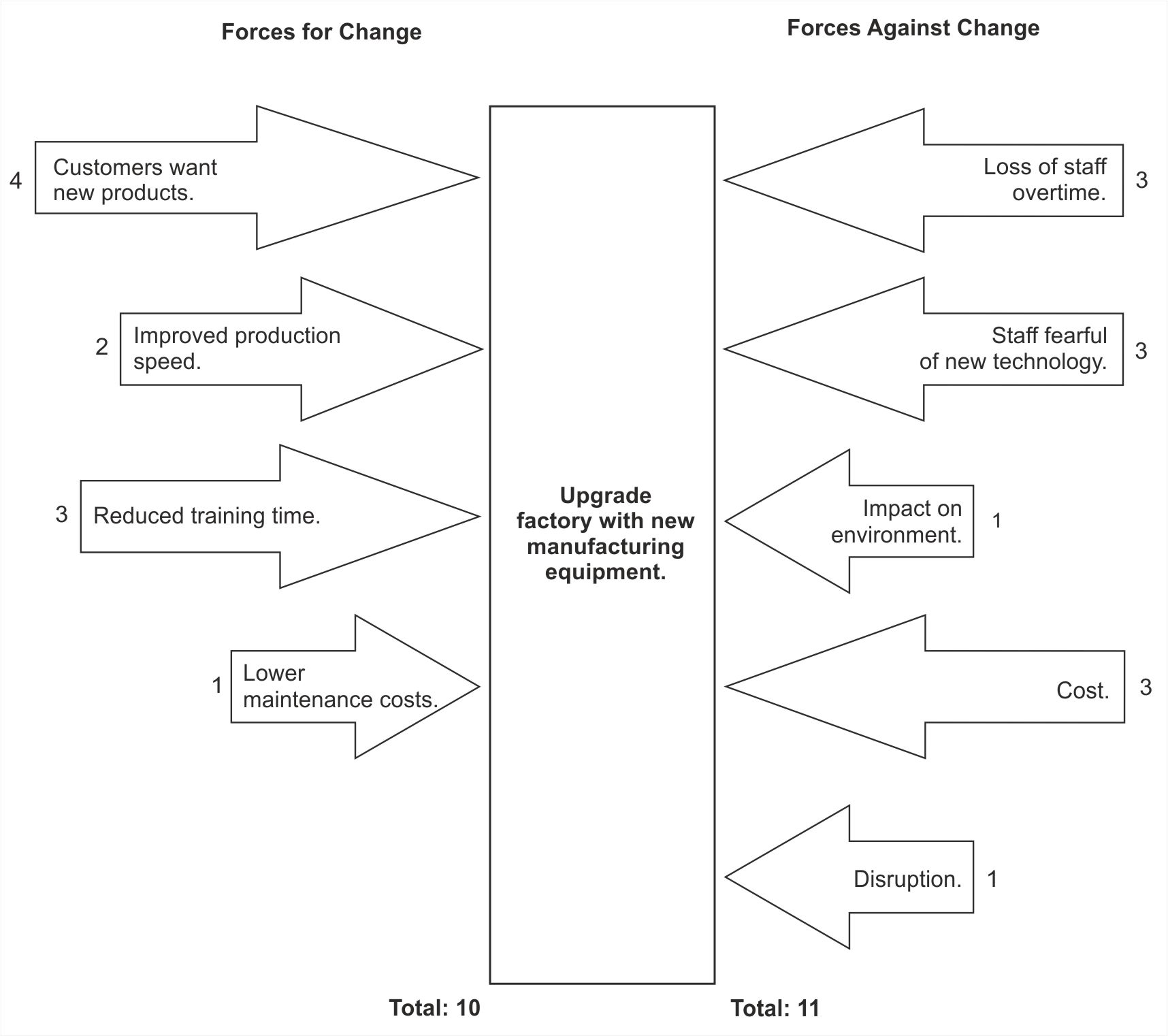Force Field Analysis
AO2 You need to be able to:
Demonstrate application and analysis of knowledge and understanding Command
Terms: These terms require students to use their knowledge and skills to
break down ideas into simpler parts and to see how the parts relate: Analyse,
Apply, Comment, Demonstrate, Distinguish, Explain, Interpret, Suggest
AO3 You need to be able to: Demonstrate synthesis and evaluation. Command
terms these terms require you to rearrange component ideas into a
new whole and make judgments based on evidence or a set of criteria. Compare,
Compare and contrast, Contrast, Discuss, Evaluate,
Examine, Justify, Recommend, To what extent
AO4 You need to be able to Demonstrate a variety of appropriate skills. Command Terms These terms require you to demonstrate the selection and use of subject-specific skills and techniques: Annotate, Calculate, Complete, Construct, Determine, Draw, Identify, Label, Plot, Prepare.
- Force Field Analysis is a method for listing, discussing, and evaluating the various forces for and against a proposed change. When a change is planned, Force Field Analysis helps you look at the big picture by analyzing all of the forces impacting the change and weighing the pros and cons.
- It is best illustrated in a diagram like this:

Force Field Analysis was created by Kurt Lewin in the 1940s. Lewin originally used the tool in his work as a social psychologist. Today, however, Force Field Analysis is also used in business, for making and communicating go/no-go decisions.
You use the tool by listing all of the factors (forces) for and against your decision or change. You then score each factor based on its influence, and add up the scores for and against change to find out which of these wins.
You can then look at strengthening the forces that support the change and managing the forces against the change, so that it's more successful.
http://www.mindtools.com/pages/article/newTED_06.htm Also includes a free template
Each force could be given a weighting, to
add depth to the analysis or make the arrows reflect the strength of
the force by its relative size.
